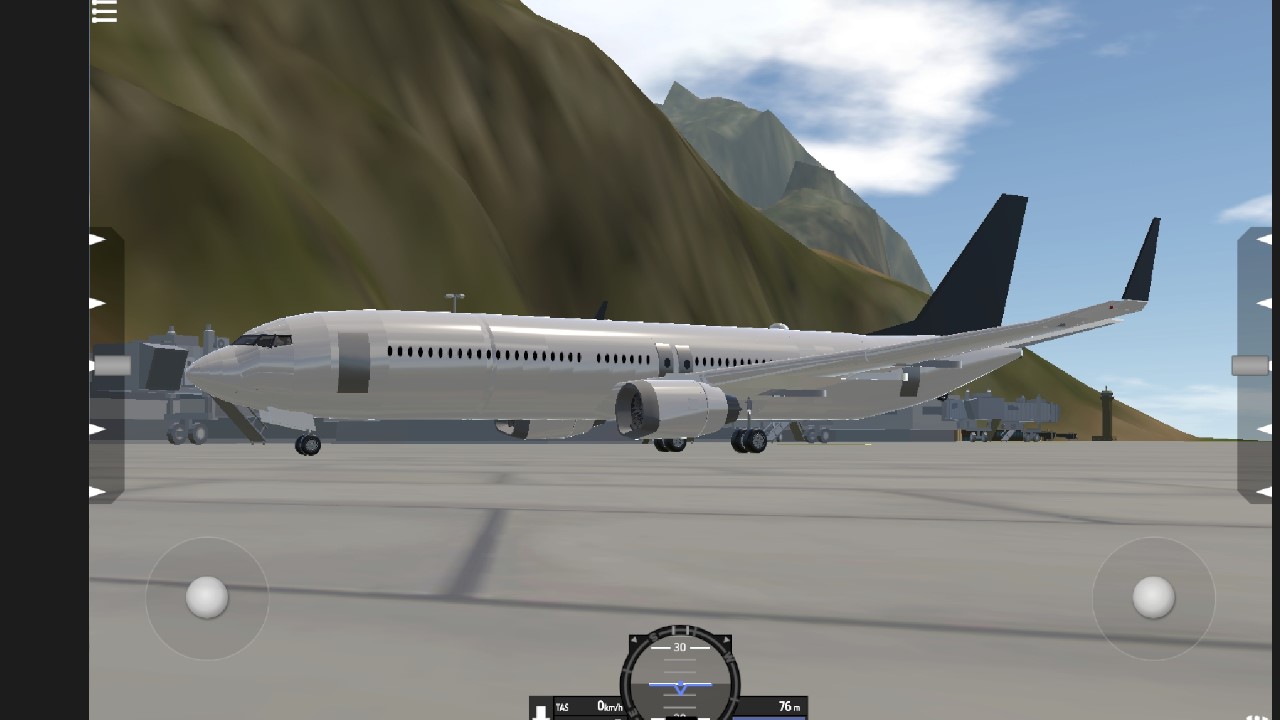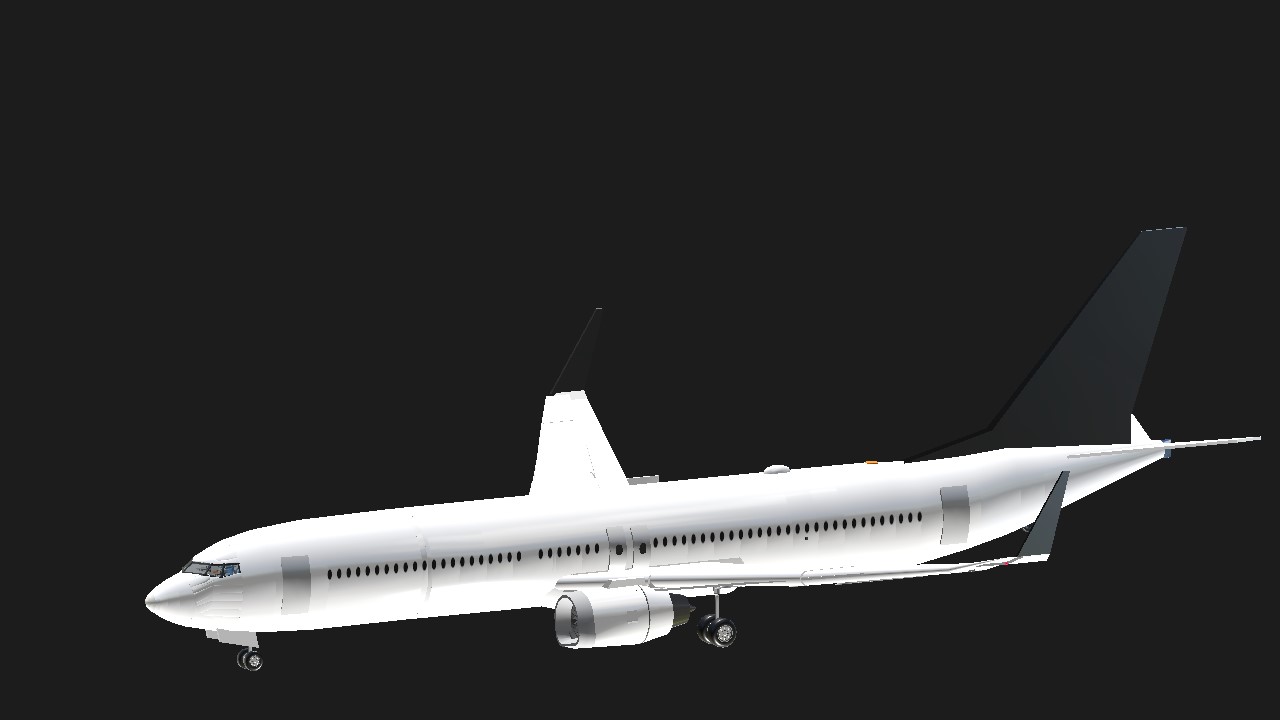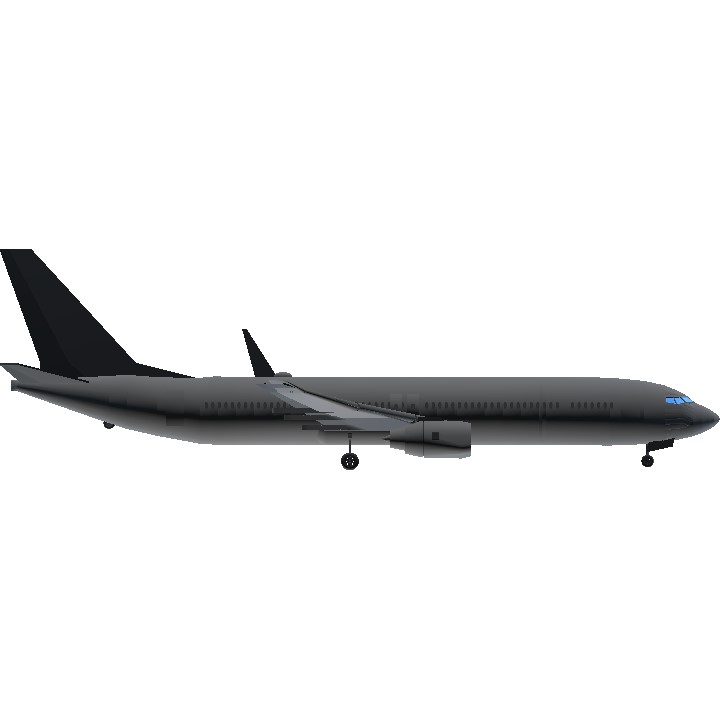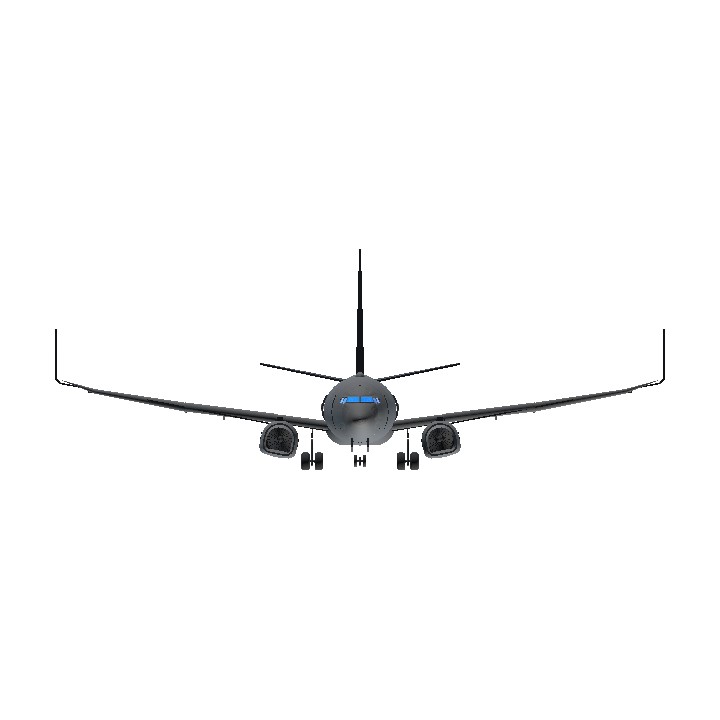Following Boeing's merger with McDonnell Douglas, the 737-800 also filled the gap left by Boeing's decision to discontinue the McDonnell Douglas MD-80 and MD-90 aircraft. For many airlines in the U.S., the 737-800 replaced aging Boeing 727-200 trijets.
The 737-800 burns 850 US gallons (3,200 L) of jet fuel per hour—about 80 percent of the fuel used by an MD-80 on a comparable flight, while carrying more passengers.[52] The Airline Monitor, an industry publication, quotes a 737-800 fuel burn of 4.88 US gal (18.5 L) per seat per hour, compared to 5.13 US gal (19.4 L) for the A320.[53] In 2011, United Airlines— flying a Boeing 737-800 from Houston to Chicago—operated the first U.S. commercial flight powered by a blend of algae-derived biofuel and traditional jet fuel to reduce its carbon footprint.[54]
In early 2017, a new 737-800 was valued at $48.3 million, falling to below $47 million by mid-2018.[55][unreliable source?] By 2025, a 17-year-old 737-800W will be worth $9.5 million and leased for $140,000 per month.[56][unreliable source?]
As of May 2019, Boeing had delivered 4,979 737-800s, 116 737-800As, and 21 737-800 BBJ2s, and has twelve 737-800 unfilled orders.[3] The 737-800 is the best-selling variant of the 737NG and is the most widely used narrow-body aircraft.[57] Ryanair, an Irish low-cost airline, is among the largest operators of the Boeing 737-800, with a fleet of over 400 of the -800 variant serving routes across Europe, Middle East, and North Africa.[58]
737-800BCF
Edit
The first 737-800BCF Boeing Converted Freighter was delivered to West Atlantic in April 2018
In February 2016, Boeing launched a passenger-to-freighter conversion program, with converted aircraft designated as 737-800BCF (for Boeing Converted Freighter). Boeing started the program with orders for 55 conversions, with the first converted aircraft due for late 2017 delivery.[59] The first converted aircraft was delivered to West Atlantic in April 2018.[60]
At the 2018 Farnborough Airshow, GECAS announced an agreement for 20 firm orders and 15 option orders for the 737-800BCF, raising the commitment to 50 aircraft. Total orders and commitments include 80 aircraft to over half a dozen customers.[61] Since early 737NG aircraft become available on the market, they have been actively marketed to be converted to cargo planes via the Boeing Converted Freighter design because the operational economics are attractive due to the low operating costs and availability of certified pilots on a robust airframe.[citation needed]
Modifications to the 737-800 airframe include installing a large cargo door, a cargo handling system, and additional accommodations for non-flying crew or passengers.[61] The aircraft is designed to fly up to 1,995 nmi (3,695 km) at a MTOW of 174,100 lb (79,000 kg).[62]
737-800SF
Edit
In 2015, Boeing launched the 737-800SF passenger to freighter conversion program with Aeronautical Engineers Inc (AEI). The conversion can be completed by AEI or third-parties such as HAECO. GECAS was the initial customer. It has a 52,800 lb (23.9 tonnes) payload capacity, and a range of 2,000 nmi (3,750 km).[63] It received its supplemental type certificate from the FAA in early 2019.[64] In March 2019, the first AEI converted aircraft was delivered to Ethiopian Airlines on lease from GECAS.[65] The Civil Aviation Administration of China cleared it in January 2020.[66] Aircraft lessor Macquarie AirFinance ordered four 737-800SFs in March 2021.[67]
737-900
Edit
Stretched to 138 ft 2 in (42.11 m) and keeping the double overwing exits, the first 737-900 was delivered to Alaska Airlines on May 15, 2001
Boeing later introduced the 737-900, an even longer variant stretched to 138 ft 2 in (42.11 m). Because the -900 retains the same exit configuration of the -800, seating capacity is limited to 189, although aircraft equipped with a typical 2-class layout will seat approximately 177. The 737-900 also retains the MTOW and fuel capacity of the -800, trading range for payload. Alaska Airlines launched the 737-900 in 1997, the 737-900 made its first flight on August 3, 2000, and Alaska Airlines accepted the delivery on May 15, 2001. The type proved unpopular, with only 52 delivered, before being replaced by the improved 737-900ER.[3]
737-900ER
Edit
The 737-900ER features an extra door aft of the wing, Lion Air received the first one on April 27, 2007
The 737-900ER (Extended Range), which was called the 737-900X before launch, was the final and largest variant of the Boeing 737 NG line. It was introduced to fill the range and passenger capacity gap in Boeing's product offerings after the 757-200 was discontinued, address the shortcomings of the 737-900, and to directly compete with the Airbus A321.
Up to two auxiliary fuel tanks in the cargo hold and standard winglets improved the range of the stretched jet to that of other 737NG variants, while an additional pair of exit doors and a flat rear pressure bulkhead increased maximum seating capacity to 220 passengers.[68][69] Airlines may deactivate (plug) the additional exit doors if the total configured capacity of the plane is 189 passengers or less.[69]
The first 737-900ER was rolled out of the Renton, Washington, factory on August 8, 2006, for its launch customer, Lion Air, an Indonesian low-cost airline. The airline received this aircraft on April 27, 2007, in a special dual paint scheme combining Lion Air's logo on the vertical stabilizer and Boeing's livery colors on the fuselage. A total of 505 -900ERs were delivered.[3]
Specifications
Spotlights
- Aarav 3.1 years ago
General Characteristics
- Predecessor Boeing 737 800 Next Generation
- Successors 1 airplane(s) +63 bonus
- Created On Android
- Wingspan 109.8ft (33.5m)
- Length 129.6ft (39.5m)
- Height 39.7ft (12.1m)
- Empty Weight 95,044lbs (43,111kg)
- Loaded Weight 158,443lbs (71,868kg)
Performance
- Power/Weight Ratio 0.901
- Wing Loading 71.3lbs/ft2 (348.0kg/m2)
- Wing Area 2,222.9ft2 (206.5m2)
- Drag Points 24602
Parts
- Number of Parts 451
- Control Surfaces 16
- Performance Cost 1,885







U could use vertical cut for the nose